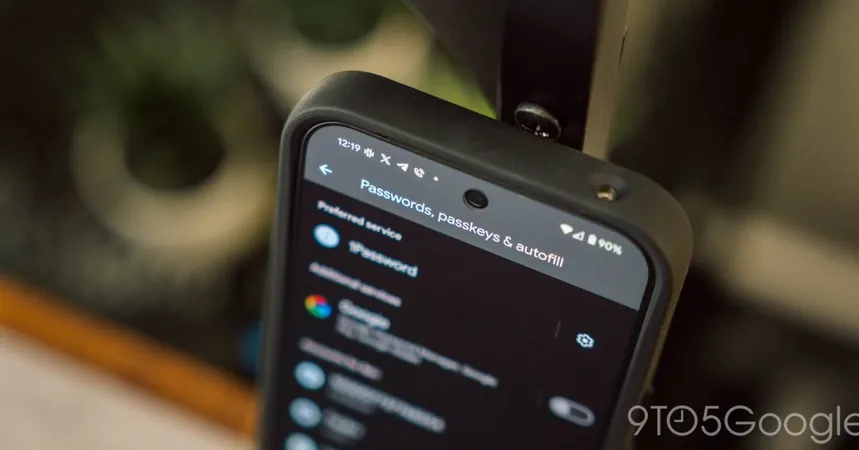
Unlocking the Power of AI: Eight Real-Life Applications Two Years After ChatGPT's Launch
2024-10-06
In the rapidly evolving landscape of technology, a significant study reveals that 24% of American workers are now leveraging generative AI in their daily tasks. Data expert Kiko Llaneras shares how he has integrated this groundbreaking technology into his workflow, a phenomenon that has exceeded expectations for adoption speed compared to past tech innovations.
Reflecting on the historical context, it’s notable how many technologies, like personal digital assistants (PDAs), took years to gain traction, yet now, the transition to AI usage has been remarkably swift. Llaneras takes us through his personal experiences with AI tools, highlighting practical applications that have enhanced his efficiency and productivity.
How I Use AI
1. **Programming Boost**: Using GitHub Copilot, Llaneras has revolutionized his programming process. This tool acts as an advanced auto-completion assistant, predicting entire code segments instead of just words, thus streamlining his workflow in R and RStudio.
2. **Language Assistance**: Chatbots like Claude 3.5 and GPT-4 serve as linguistic aides, helping him translate and adjust tone in written communications. The flexibility of AI allows for nuanced queries like, “Can I use ‘reach’ instead of ‘scope’?”—a small but impactful enhancement to his writing.
3. **Spreadsheet Wizardry**: AI tools offer invaluable help in navigating complicated functions in Excel or Google Spreadsheets, assisting in everything from formulas to changing design elements.
4. **Efficient Searches**: Llaneras often employs AI for quick inquiries, like verifying the launch date of ChatGPT. While the speed is commendable, he advises verifying sources diligently to ensure accuracy.
5. **Data Extraction**: Instead of laboriously transferring data from images or PDFs, a simple screenshot can be processed by Claude to create a CSV file, saving time and minimizing errors.
6. **Data Generation**: When tasked with compiling electoral vote data for U.S. states, Llaneras found that AI could handle the lookup and formatting, subject to final verification for accuracy.
7. **Emoji Selection**: Even mundane tasks like selecting emojis are made easier; he can simply type a description and receive tailored emoji suggestions.
8. **Brainstorming Partner**: AI also functions as a collaborative tool, providing fresh ideas and perspectives. For instance, if he’s stuck on creating better charts, he prompts ChatGPT to expand his thinking.
Broader AI Usage Trends
Llaneras’ experience reflects broader trends captured in August studies, indicating that many users rely on AI for translation, summarization, research, and programming. Notably, figures like Javier López, founder of the AI startup Magnific, claim that half of his application’s source code was also generated by AI, demonstrating the transformative potential of these tools.
Interestingly, while many writers turn to chatbots for assistance, Llaneras opts out, possibly due to his intrinsic connection to the craft of writing itself.
As AI continues to evolve, its adoption will likely vary by profession. Current statistics show the highest usage among computer scientists, mathematicians, and financial professionals, with 46% of these workers tapping into generative AI.
What Does the Future Hold?
Looking ahead, Llaneras expresses both excitement and caution regarding the future of AI. With a rich history of technological evolution, he reflects on the potential successes that might arise over the next decade, tilting toward optimism about its continued integration into our workflows.
My Reliable Apps
In discussing his daily tech ecosystem, Llaneras identifies tools that remain staples in his routine:
- **Raycast**: A central hub for AI interactions, offering a versatile interface for various chatbots.
- **Fantastical**: A streamlined calendar app for efficient to-do management.
- **Maruman Mnemosyne**: A trusty notebook for capturing thoughts and ideas.
- **Apple Notes**: His go-to for organizing notes.
- **Workflowy**: For idea organization.
- **Reader**: For consuming content.
- **Ulysses**: For writing projects.
- **Additional Recommendations**: He enjoys using Snipd, Klack, Cleanshoot, and Rize.
As AI continues to weave itself into the fabric of our daily tasks, the question remains: How will we harness its power in the coming years? With the potential to transform industries and redefine our workflows, the future of AI looks bright and promising. Stay tuned for more insights into this exciting technological landscape!




 Brasil (PT)
Brasil (PT)
 Canada (EN)
Canada (EN)
 Chile (ES)
Chile (ES)
 España (ES)
España (ES)
 France (FR)
France (FR)
 Hong Kong (EN)
Hong Kong (EN)
 Italia (IT)
Italia (IT)
 日本 (JA)
日本 (JA)
 Magyarország (HU)
Magyarország (HU)
 Norge (NO)
Norge (NO)
 Polska (PL)
Polska (PL)
 Schweiz (DE)
Schweiz (DE)
 Singapore (EN)
Singapore (EN)
 Sverige (SV)
Sverige (SV)
 Suomi (FI)
Suomi (FI)
 Türkiye (TR)
Türkiye (TR)